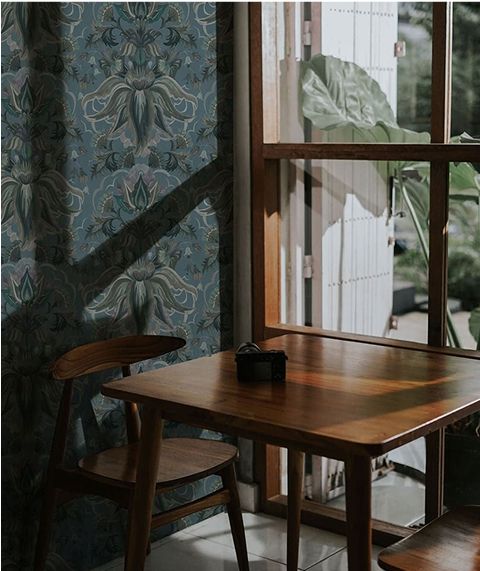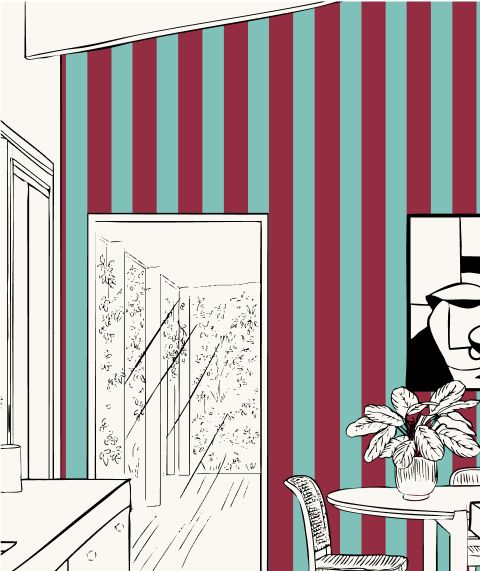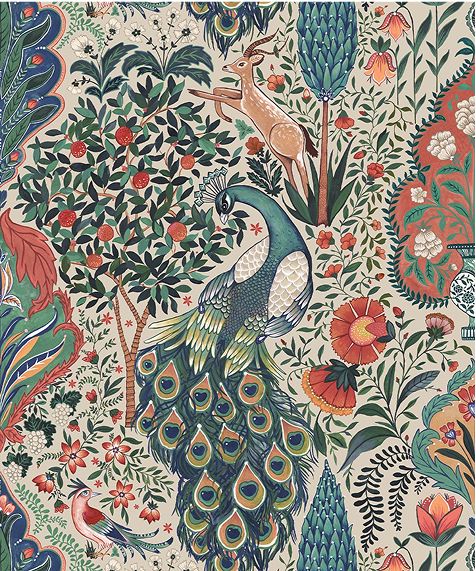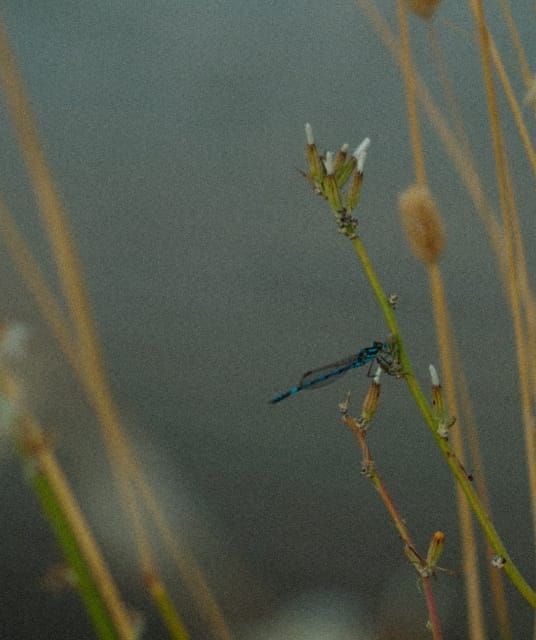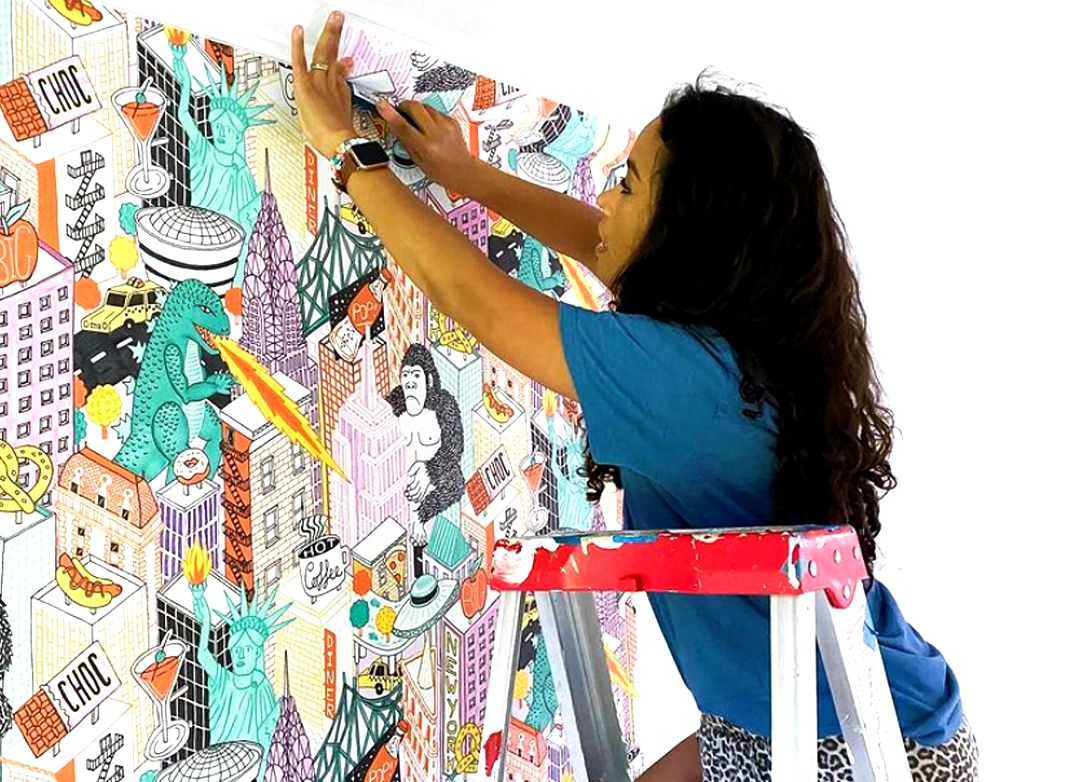Image above is from Fallon Carmichael Santiago from @casadefallon installing New York City
How much do I order?
Knowing the quantity is imperative. It is important that you order the correct number of rolls at one time because you may run into color issues if you order at different times. Many wallpaper companies print in batches. So if you order wallpaper and then realize you need another roll, you better hope you can order a roll from the same batch otherwise the wallpaper may come out lighter, darker or a slightly different hue. At Milton & King, we print to order. So we only print the amount you order. If you order two rolls and then a week later order a third, there is a chance that the color of the third roll won’t perfectly match what you’ve already pasted onto the wall. So let’s get the numbers right.
You can order the correct amount of wallpaper by using the wallpaper calculator on each of our product pages. It is not a good idea to estimate based on size or square footage. You may think, my wall is 9 feet tall and 6 feet wide, so a roll that is 33 feet long and 2 feet wide should easily cover this. After all, 3 strips of wallpaper that are 9 feet tall comes to only 27 feet of wallpaper, right? WRONG! There are things you have not taken into account here. First, in order to get clean cuts at the ceiling and the corner of your wall, you will need to overlap about an inch at the edges. That is already going to leave a tiny strip short at the end of the wall. Also, you’re not taking account the pattern repeat of the design. The Pattern Repeat is how far down the roll that the design on the wallpaper repeats. As you match the wallpaper from drop to drop, you need to match the pattern of the art. When you do this, you can lose up to 6 feet of wallpaper per drop for some designs. Other designs with tiny features may have as little as 6 inches of waste.
So don’t forget to the enter the Pattern Repeat of the design. In the calculator, this will default to 1. You can find the Pattern Repeat of the design just a bit further down the product page where you will find additional information. Some designs have no pattern repeat, known as Free Match designs. This means you don’t need to match the design on the wallpaper to the strip of wallpaper to the left and to the right. Most vertical or shiplap wood designs are Free Match designs.
Finally, even professional installers can get the quantity wrong if they don’t realize that Milton & King wallpaper rolls are considered U.S. Double Rolls. In the U.S., a single roll is about 16 feet of wallpaper. Our rolls are 33 feet long and 2 feet wide. So, if you’re thinking, wow my installer suggested that I order a substantial amount of wallpaper, please double check. Use the wallpaper calculator on our website. And if you’re still unsure, hop onto our online chat for a bit of extra help.
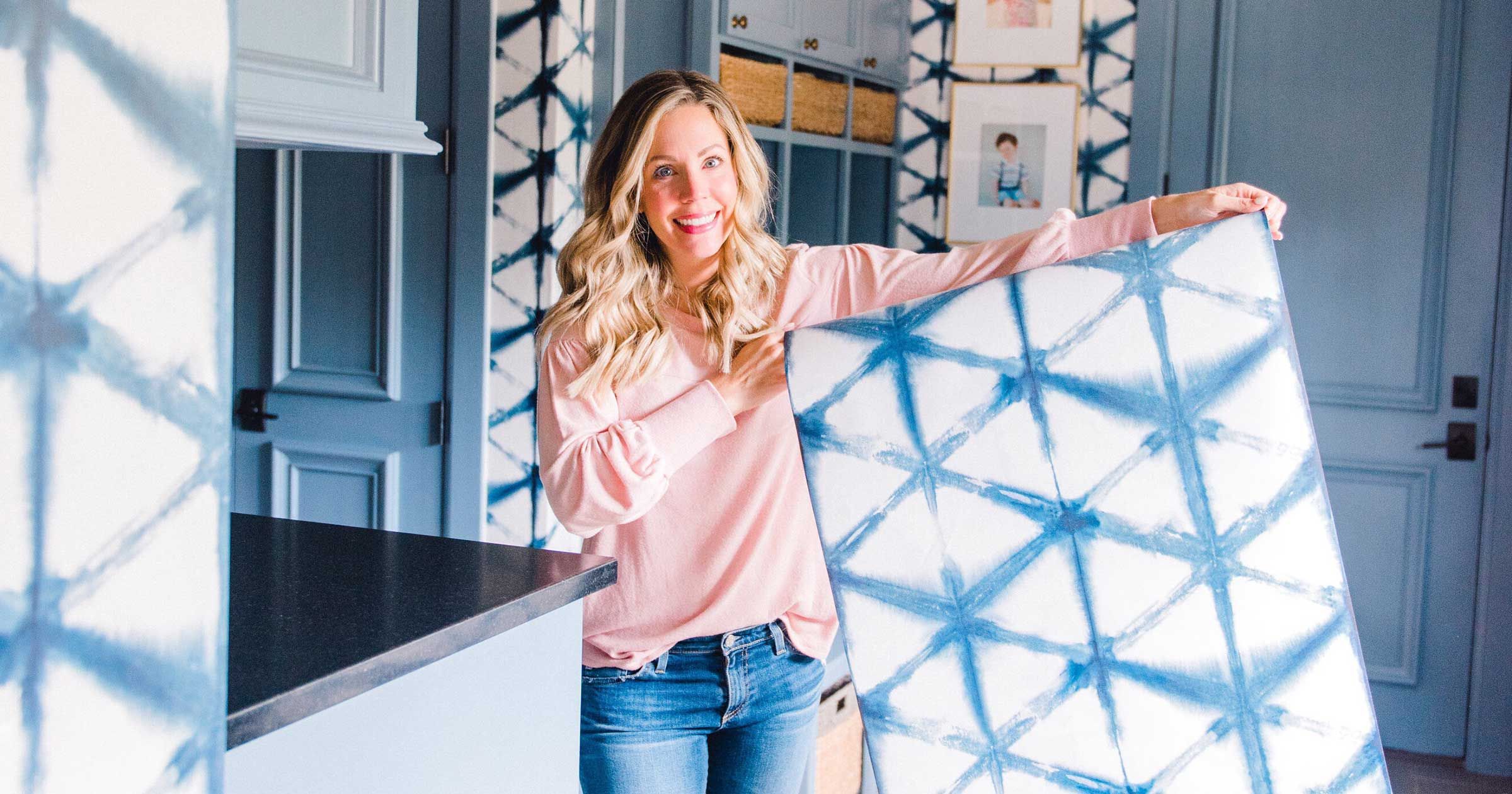
Image above from Ashley from Curls & Cashmere installing Shibori Star
Is This Wallpaper Removable?
The short answer is yes. However, it is not peel & stick wallpaper. About two years ago, we tried a line of peel & stick wallpapers and were not impressed. Our customers reported to us that peel and stick was much harder to install than paste-the-wall wallpaper. That’s because if you do something wrong with peel & stick, you need to peel it back and try again. It was also more prone to air bubbles and wrinkles. Our non-woven paste-the-wall wallpaper is made to be forgiving. Because the paste doesn’t dry right away, you can push the paper in place and the air bubbles are a lot easier to smooth out. But even better, it can be removed as well. It’s not like the old days where you’re scraping stubborn pieces of wallpaper and ruining your walls. Now you can peel off the wallpaper dry or wet. And the prep is very important. For more info on this, read our prep blog and our how to remove wallpaper blog.
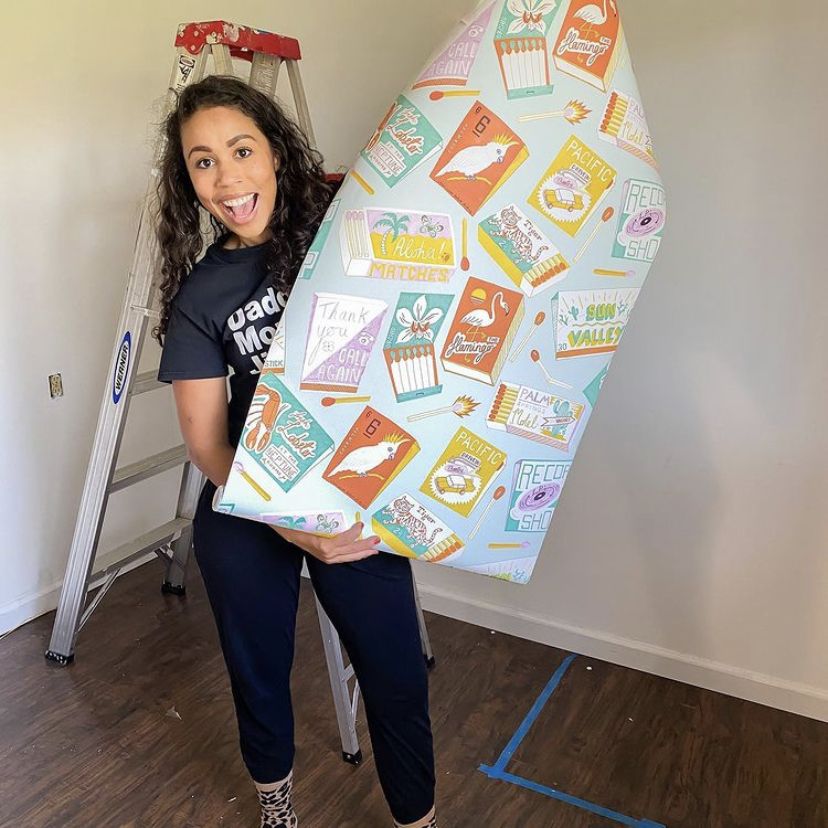
Image above is from Fallon Carmichael Santiago from @casadefallon installing Match Books
Wallpaper Paste & Other Tools
Our wallpaper is not self-adhesive like a peel & stick. Nor do we sell paste. Our wallpaper is just flat beautifully designed wallpaper on a non-woven base. You will need to purchase paste from your local hardware store. Most of the products you see on the shelf at your reputable hardware store will work fine with our wallpaper. Roman and Zinnsser products are popular. There are powders you can mix with water and pre-mixed pastes. You apply the paste to the wall, just like you would paint, with a roller brush and a fine brush for the corners and edges. Only paste the part of the wall for the strip you are putting up. Don’t paste the whole wall or it may dry before you can get to it. Applying a primer to your wall before wallpapering will help to seal the wall so that the paste doesn’t soak into the wall, leaving more paste for your wallpaper to properly stick to. Be generous with your application of paste. Any excess will push out the edges and can be wiped down.
In addition to the paste, you will need a leveling tool and a pencil to mark the wall and draw a plumb line in order to get your first strip of wallpaper absolutely straight. Don’t rely on the straightness of your walls or ceiling, they almost are never perfectly straight. You will also need a roller brush and a fine brush for the paste. A wallpaper smoothing tool is also useful, though I have seen people use a ruler and even a credit card to smooth out the wallpaper. Have a damp cloth on hand to wipe away excess paste. Finally, be sure to cover your floors with plastic or newspaper so you don’t drip paste onto the floor.
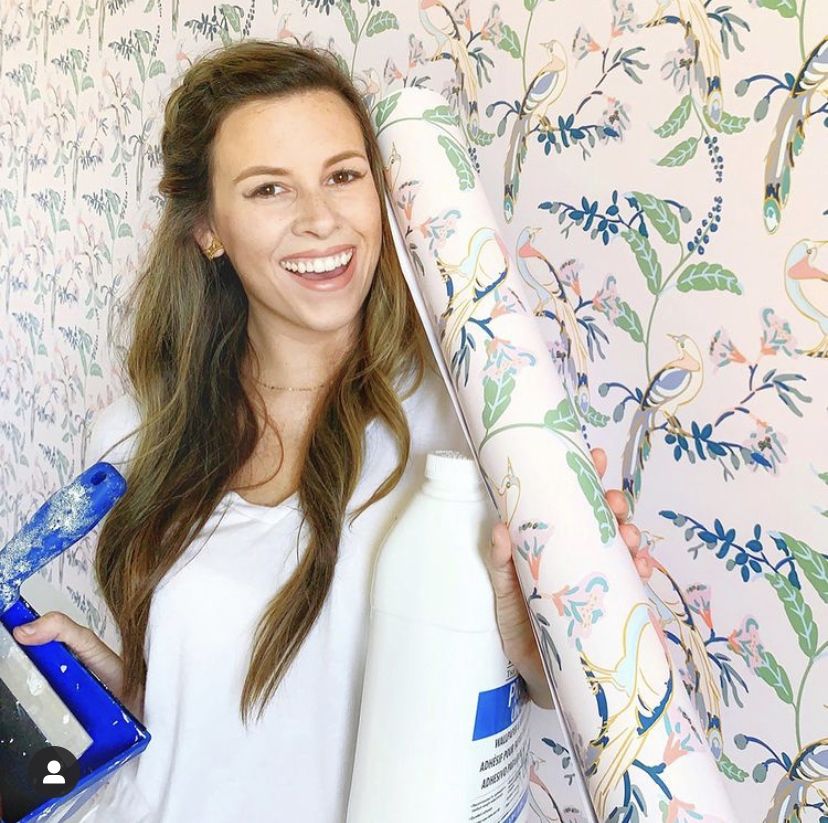
Image above from Merichelle Jones from @werethejoneses with Birds of Paradise
We’ll close out this blog with a few common questions we receive.
Does your wallpaper have a physical texture?
No, all of our wallpaper is printed on flat paper. Any texture is strictly visual.
My walls have texture, is that a problem?
That all depends. How deep is the texture? Is it like an orange peel or do you have some more interesting things happening? Generally, the wallpaper will do fine over texture but if it’s more than an orange peel, the texture will likely show through the wallpaper. For some designs, like bricks, it may even been beneficial. If you’re using a design like Wainscoting, it will look pretty silly to have any texture showing through what is supposed to be flat wood. It won’t really affect the way the wallpaper sticks, but it can affect the look. Some designs will hide wall texture better than others.
Is the wallpaper waterproof?
No. It is durable for bathroom environments but we recommend a quick wipe down if water is splashed onto the wallpaper. Otherwise any sitting water can soak through and eventually weaken the paste. To waterproof your wallpaper, visit our How To Waterproof Wallpaper Blog.
I have windows and doors, do I subtract that from my measurements?
No. Treat the wall as one solid wall. The reason is, you will want to match the pattern of the design as you go under windows and over doorways. With wallpaper that is wasted because of the pattern repeat, you could come up short if you subtract these obstacles. Always measure the whole height and whole width. Chair rails and wainscoting would be the exception. If you are wallpapering above a chair rail, the height should only be from the chair rail to the ceiling.
Where is the wallpaper made? How long will it take to get it?
We currently manufacture the wallpaper out of Toowoomba, Australia, which is about 130 km (80 miles) east of Brisbane in the state of Queensland. We always choose the fastest shipping method and it typically takes about 7 to 10 business days from the time you order to delivery to get from Australia to most places in the U.S.A.
